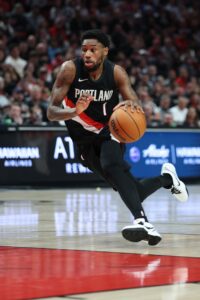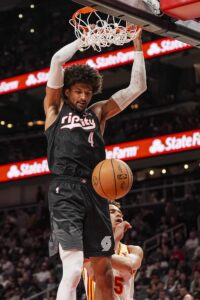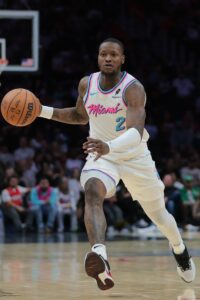Timberwolves forward Jaden McDaniels has been a perennial All-Defensive candidate in recent years, but didn’t command significant attention from opposing defenses. Entering this season, McDaniels had never averaged more than 12.2 points per game in a season or had a usage rate higher than 16.3%.
Early in his sixth NBA season, however, the 25-year-old is showing signs of developing into a legitimate two-way threat, writes Jon Krawczynski of The Athletic. Through 11 games, McDaniels is averaging 18.4 points per game on a scorching hot .550/.538/.844 shooting line, with a 21.3% usage rate. While those shooting percentages probably aren’t sustainable, McDaniels has looked more comfortable handling the ball, getting to the rim, and creating shots for both himself and teammates, according to Krawczynski.
“We’re going to keep giving him the ball, putting the ball in his hands,” teammate Anthony Edwards said. “He can play with the ball in his hands; he’s just got to make the right play. If he makes the right play, we can be 10 times better, you know? Because he’s a great scorer. We just need him to be another facilitator for us.”
McDaniels’ talents as a perimeter defender have made him a valuable role player and quality starter despite a lack of offensive production, but if he continues to play like he has on the other end of the court, he could be on his way to establishing himself as a star in his role.
“He’s one of the best two-way players in the league,” Julius Randle said, per Krawczynski. “We’ve got to be consistent in that and keep feeding him confidence, trusting him.”
We have more from around the Northwest:
- Ace Bailey‘s stats so far this season (8.7 PPG on .415/.324/.824 shooting) have been modest, but the Jazz rookie has scored double-digit points in four consecutive games and is earning praise for his team-first approach, says Andy Larsen of The Salt Lake Tribune. “He’s highly intentional. He, even at 19, fits in with us. He wants to do the right thing always,” veteran big man Kevin Love said. “Ten games in, once he gets to 20, he’s gonna make another step — once he gets to 40, and once he gets a full season.”
- The offseason addition of veteran center Jonas Valanciunas has allowed the Nuggets to slightly reduce Nikola Jokic‘s workload (he’s averaging 33.9 MPG after playing 36.7 last season) and to be more competitive when the three-time MVP isn’t on the floor (the team has a -4.0 net rating when Jokic sits, compared to -9.3 last season). Mark Medina of Essentially Sports spoke to Valanciunas about his experience in Denver so far and to head coach David Adelman about what the 33-year-old has brought to the team. “Attitude-wise, culture-wise, statistically, everything has been positive,” Adelman said of Valanciunas. “He brings such a good energy every day with the team. I feel like there is a part of him that is just really enjoying being on a successful team. He can be an impact guy on that team and play really important games.”
- A spokesperson for Paul Allen‘s estate denied a report claiming that the Allens would be retaining a 20% stake in the Trail Blazers once the sale of the team to Tom Dundon is complete, per Sean Highkin of the Rose Garden Report (Substack link). That spokesperson stated that the Blazers will be owned entirely by Dundon’s group once the sale closes, with the Allen estate no longer holding any shares.
 Wesley had initially been ruled out “indefinitely” following the
Wesley had initially been ruled out “indefinitely” following the  According to the Blazers, Thybulle sustained the thumb injury during Wednesday’s game in Utah. The 28-year-old had an MRI on Thursday, which revealed the UCL tear.
According to the Blazers, Thybulle sustained the thumb injury during Wednesday’s game in Utah. The 28-year-old had an MRI on Thursday, which revealed the UCL tear. “While we are in agreement with the league that upholding the integrity of the game is of the utmost importance, their decision to place Terry on leave without pay is counter to the presumption of innocence and inconsistent with the terms of our Collective Bargaining Agreement,” an NBPA spokesperson said. “We plan to challenge their decision via the proper channels.”
“While we are in agreement with the league that upholding the integrity of the game is of the utmost importance, their decision to place Terry on leave without pay is counter to the presumption of innocence and inconsistent with the terms of our Collective Bargaining Agreement,” an NBPA spokesperson said. “We plan to challenge their decision via the proper channels.”